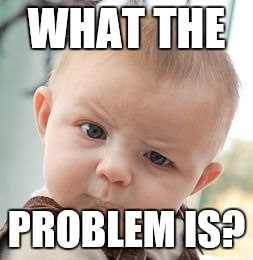Prior to this class, I had always thought that of startups as haphazardly put together companies that through some stroke of luck ended up to be wildly successful. Yet, as each week passes and I further my knowledge of startups I am continually reminded of how misinformed my assumptions were.
In Chapter 3: The New Business Models for News Toolkit, an idea is brought up that was insightful for avoiding problems in startups but could easily be extrapolated into everyday life. The idea is predicated on being acutely aware of the strengthens and weaknesses of yourself but also your entire team.
“Although it may seem like a tedious process, it is better to acknowledge your weaknesses now and explore ways in which you can overcome them, than to ignore them and have to scramble at a later date,” the article states.
This planning prior to launch allows for your startup to address issues before they fester into bigger problems in the future. Sadly, pretending that they do not exist does not solve them.

Once the team has identified both individual and group strengths and weaknesses you can begin to double down where you excel personally. Yet, as a team, you can hire those who excel where you lack.
“Look for ways to strategically exploit your strengths and minimize your weaknesses” the article reminds.
Along with being responsible for knowing their own team, startups should also have an idea of who would want their product. This is known as the “audience.” It is helpful to know who will be consuming your content when creating it in the first place. Having an exact type of person in mind allows for you to communicate more effectively with them.
As a personal example, I have struggled with how to write blog posts for this class because I could not figure out who I was writing for. Was it to be written to Professor Haimerl? Our class? Random people on the Internet who stumble upon this site?
In the case of the blog posts, I could easily ask Professor Haimerl who we were writing for so then I could construct that person in my head and pretend that I was writing a “Dear reader,” letter to them.
In a book called Tribe of Mentors, Tim Urban, the blogger behind Wait But Why, explains that he writes to himself.
“I started out basically imagining I was writing for a stadium full of replicas of myself — which made things easy because I already knew exactly what topics interested them, what writing style they liked, what their sense of humor was, etc.”
While on the surface it may seem narcissistic to do such a thing, but it allows for you to converse with your readership in a very intimate way.
Good thing is that as a news startup your audience is not going to be yourself, but it has never been easier to figure out who your audience is. As someone who struggles to remember a time without the Internet, I am fascinated by the ability that we now have to connect with niche audiences around the world.
I mean seriously, are you not weirded out by the fact that theoretically anyone who has an Internet connection could be reading this blog post right now?

I agree that imagining a stadium full of replicas of yourself can help you break down what is important to your audience and what is newsworthy based on what you like because chances are, if you’re interested in it then someone else is too.
LikeLike